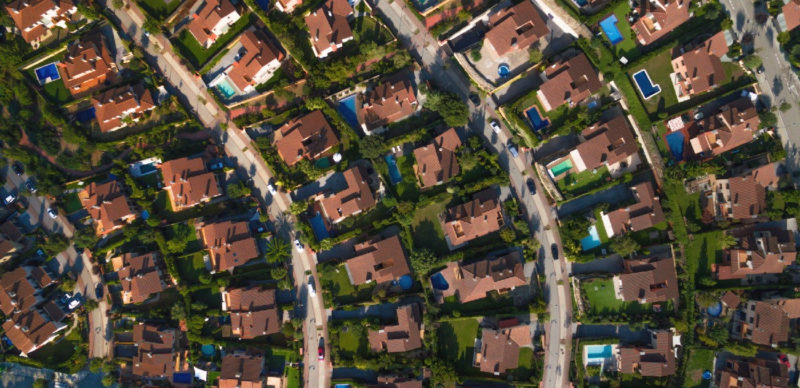Construction spending (not adjusted for inflation) totaled $2.027 trillion in October at a seasonally adjusted annual rate, up 0.6% from the upwardly revised September rate and up 11% year-over-year (y/y), the Census Bureau reported today. However, without a deflator, it is impossible to say how much of the y/y gain is in units vs. price. Private residential construction rose 1.2% for the month, with single-family homebuilding up 1.1% (the sixth monthly gain in a row), multifamily construction spending down 0.2% (the second consecutive decrease), and owner-occupied improvements up 2.0%. Private nonresidential construction spending inched up 0.1% for the month. The largest private nonresidential segment (based on the seasonally adjusted October rate)—manufacturing construction—rose 0.9% (with gains of 0.1% for computer/electronic/electrical plants, 2.6% for chemical and pharmaceutical plants, and 4.4% for transportation equipment plants). Commercial construction slumped 1.5% (consisting of warehouse, down 3.2%; retail, down 0.6%; and farm, up 5.4%). Power rose 1.2% (with electric power up 1.3% and oil and gas field structures and pipelines up 0.8%). Private office and data center construction rose 0.1%. Public construction spending increased by 0.2%. The largest public segment, highway and street construction, fell 0.3%. Public education rose 0.4%. Public transportation construction declined 0.6%.
Construction employment, not seasonally adjusted, rose y/y from October 2022 in 226 (63%) of the 358 metro areas (including divisions of larger metros) for which BLS posts construction employment data, fell in 54 (15%), and was unchanged in 78, according to an analysis AGC released on Wednesday. (AGC treats as construction-only the totals for metros in which BLS reports only combined totals for mining, logging, and construction.) New York City added the most jobs (14,600 combined jobs or 10%), followed by the Dallas-Plano-Irving division (11,000 combined jobs, 7%), and Baton Rouge, La. (9,400 construction jobs, 20%). The largest percentage gain again occurred in Baton Rouge, followed by 13% gains in Corvallis, Ore. (200 combined jobs), Lexington-Fayette, Ky. (1,800 combined jobs), and Grand Rapids-Wyoming, Mich. (3,700 combined jobs). The largest loss again occurred in Houston-The Woodlands-Sugar Land (-11,500 construction jobs, -5%), followed by Denver-Aurora-Lakewood (-5,300 combined jobs, -9%), and 4,500 combined jobs each in St. Louis, Mo.-Ill. (-9%), and the Nassau County-Suffolk County, N.Y. division (-5%). The largest percentage job losses again occurred in Kankakee, Ill. (-13%, -200 combined jobs) and Bay City, Mich. (-12%, -200 combined jobs).
“On balance, economic activity slowed since the [October 18] report, with four districts reporting modest growth, two indicating conditions were flat to slightly down, and six noting slight declines in activity,” the Federal Reserve reported on Wednesday in the “Beige Book,” which summarizes comments received by November 17 from contacts made by the Fed’s 12 regional district banks. “Commercial real estate activity continued to slow; the office segment remained weak and multifamily activity softened….Several [districts] noted that costs for construction inputs like steel and lumber had stabilized or even declined.”
BLS posted an article on Tuesday on “Nonresidential building construction overhead and profit markups: 2018 through 2022,” based on published producer price indexes (PPIs) for nonresidential building construction and inputs to nonresidential building construction, goods, along with an unpublished PPI for contractor markup. “The markup index moved higher from Spring 2018 to Spring 2020, continuing an almost decade-long trend of rising markups from lows following the 2008–09 Great Recession….In the first few months of the pandemic, a larger-than-usual percentage of PPI respondents decreased markups as contractors scrambled to fill their backlogs ahead of an uncertain future….The slight downward trend in the overhead and profit markup index at the outset of the pandemic reversed in October 2020 and rose alongside material costs throughout 2021 and 2022. Contractor markup, material costs, and nonresidential building construction producer prices reached historically high levels of increase during this period….after over a year of adjusting to higher prices and supply chain issues, the percentage of respondents with increases in markups fell in the second half of 2022, and…the balance between increases and decreases to overhead and markup margins also returned to roughly pre-pandemic levels in the latter half of 2022.” AGC posted PPI tables for October.
Source: constructioncitizen.com













